It’s hard not to love easy, alternative gardening ideas. A great one is the hay bale garden. What we really love about this potato garden idea is that it requires almost none of the common garden setup – not a ‘proper’ garden area or soil, not a lot of space, and not even a hoe or a tiller!
Are potatoes a regular ingredient at your dining table? This is a great way you can grow your own potatoes, chemical-free, and as fresh as you want!
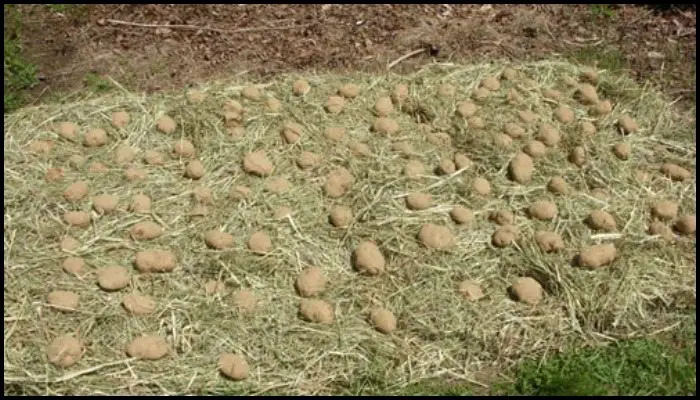
As long as you have the things listed below, you’re good to grow your own potatoes. :)
It’s easy, fun for the kids, and will most definitely give you an abundant harvest! Just don’t forget about mice when fall arrives. They shouldn’t be a problem during the summer, but they love hay during the cold seasons when they are looking for a cozy place to stay. They’ll especially love that you’ve provided both bed and three meals a day if you don’t harvest your potatoes before cool weather sets in!
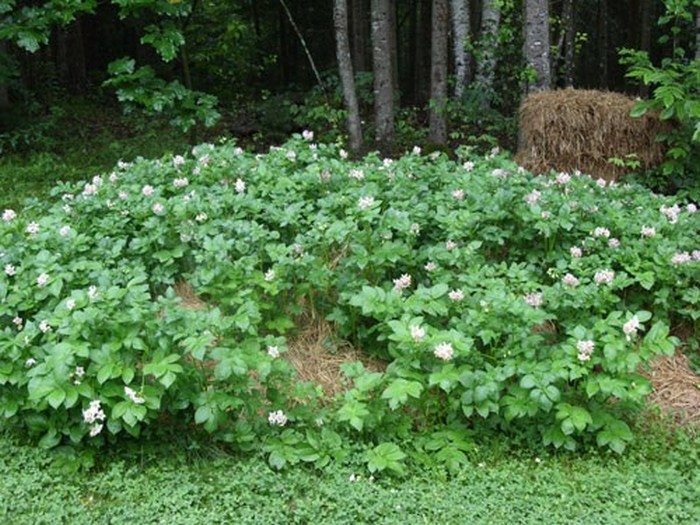
BTW, if you find this post engaging and are really interested in straw/hay bale gardening, we also have a complete guide and tutorial for planting various produce.
Contents
Grow Your Own Potatoes With Hay Bale Garden
Picture a garden where the lush green of potato plants intertwines with the rustic charm of hay bales, creating a tapestry of agricultural ingenuity. If you’re seeking a novel and efficient way to grow your own potatoes, look no further than this enchanting method on how to grow your own potatoes in hay bale gardens.
This innovative approach not only simplifies the process but also delivers impressive yields. So, it has gained substantial popularity, emerging as a preferred choice among gardening enthusiasts who are eager to achieve successful and rewarding potato harvests.

Now, gather the materials to grow your own potatoes in a hay bale garden:
Materials
- Gardening Gloves
- Hay Bale
- Cardboard
- Seed Potatoes
- Organic Potato Fertilizer
Click on any image to start the lightbox display. Use your Esc key to close the lightbox.![]()
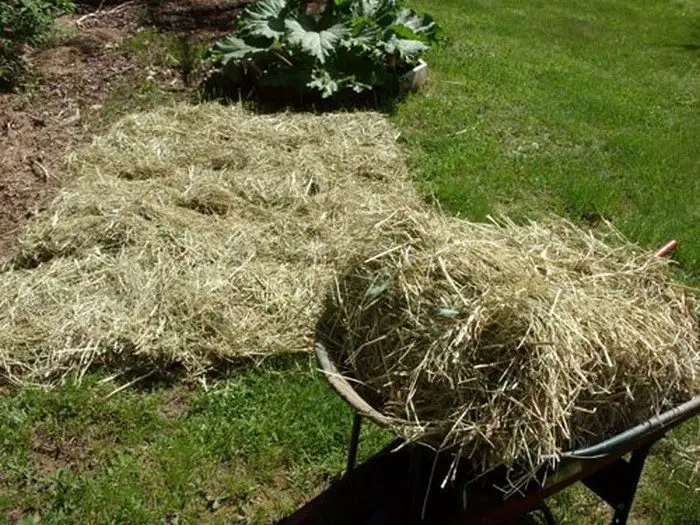
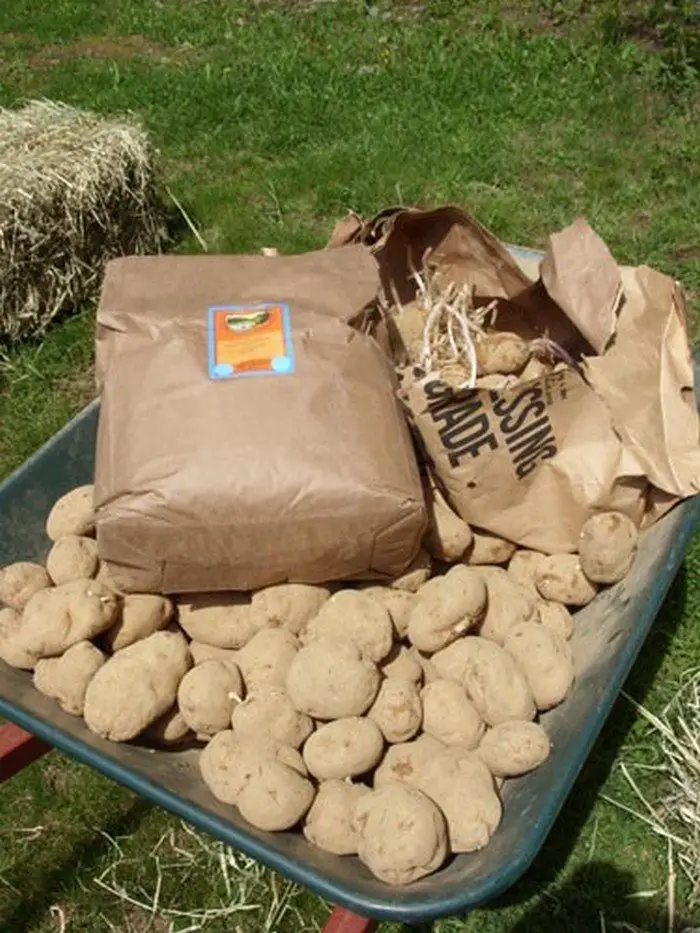
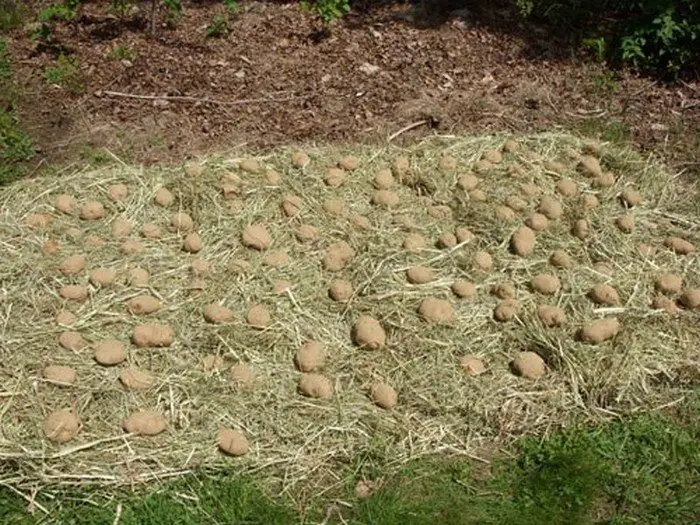
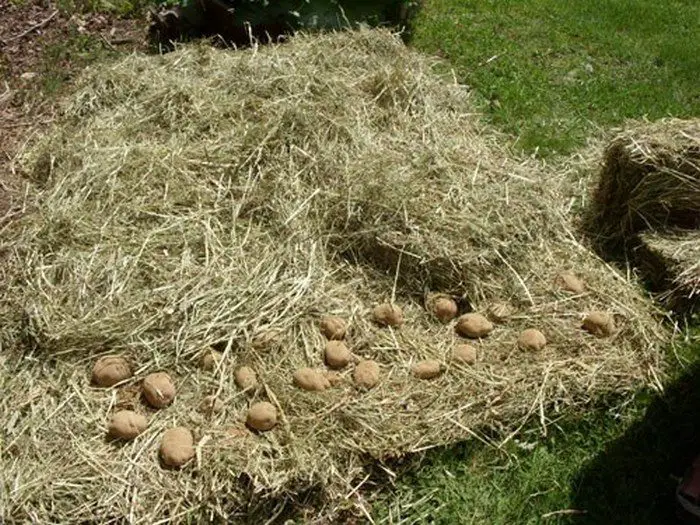

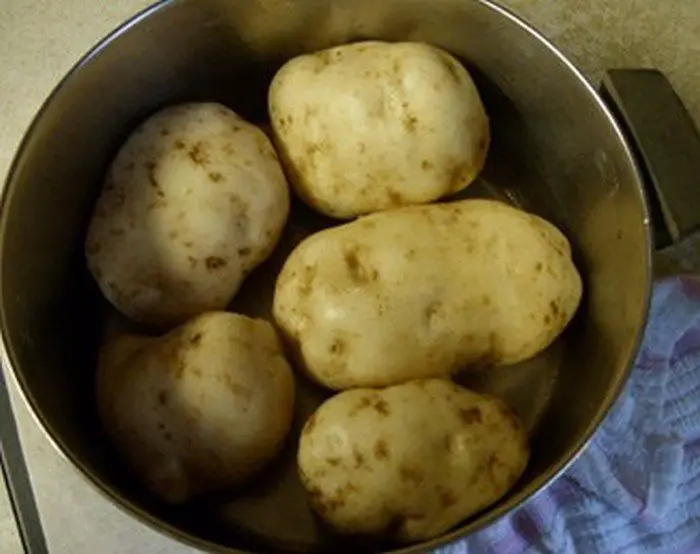
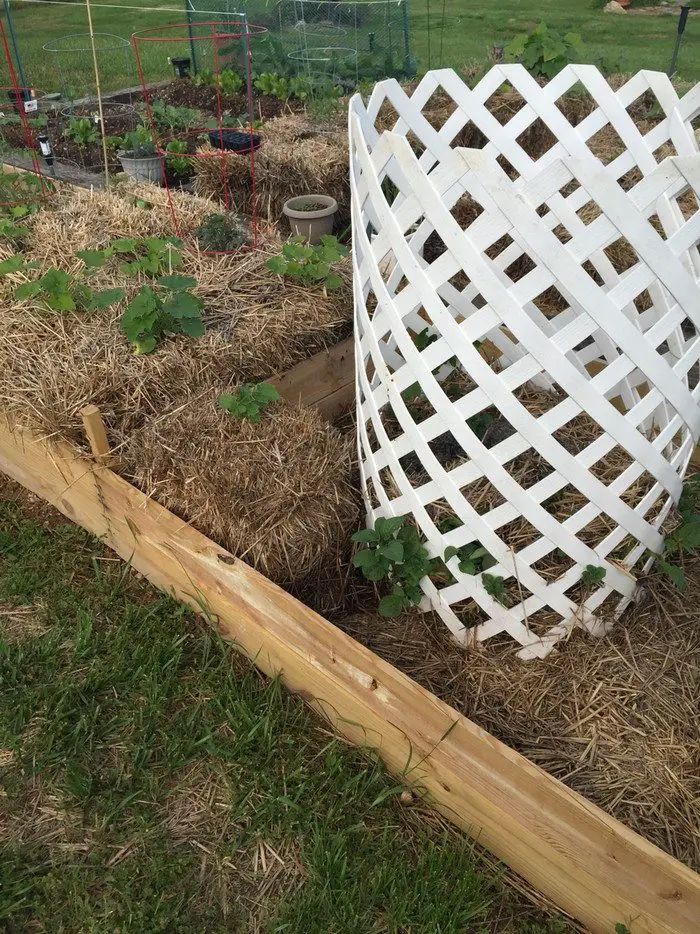

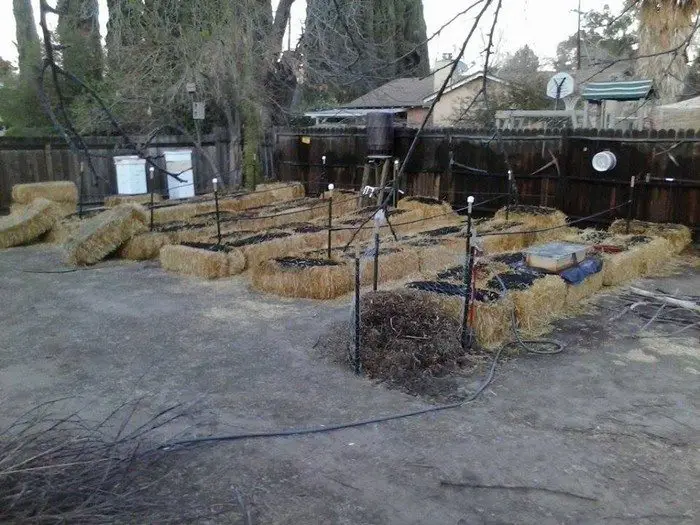

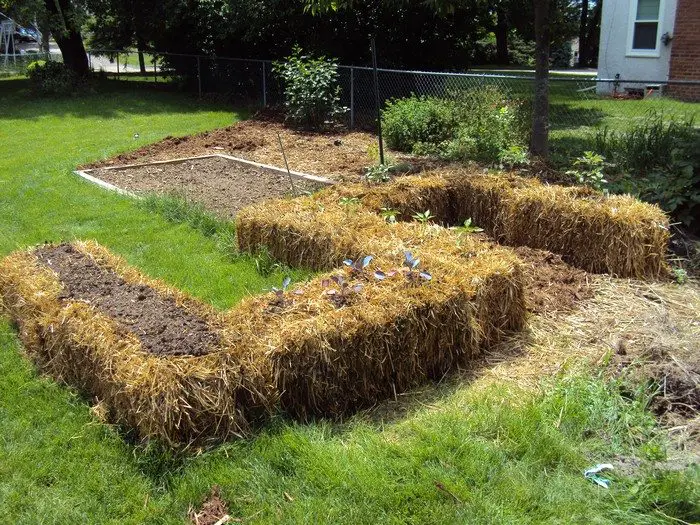
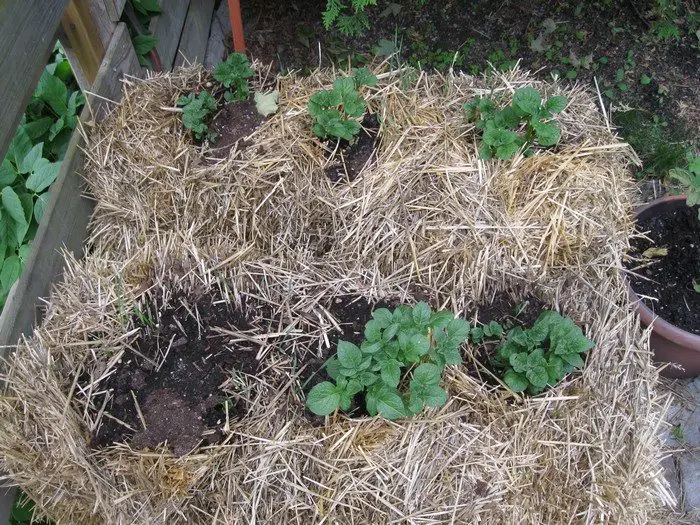
Steps
Whether you’re a novice gardener or have a green thumb, these simple steps on how to grow your own potatoes in a pile of hay will empower you to nurture a bountiful harvest of delicious, homegrown potatoes that will fill your plate with the flavors of accomplishment.
Step 1: Choose a Sunny Spot
Select a sunny location in your garden where your hay bales can soak up plenty of sunlight. Potatoes love warmth, and this will contribute to their growth.
Step 2: Prepare the Hay Bales
Position your hay bales in your chosen spot. If you’re worried about weeds, you can place a layer of cardboard underneath the bales. This helps prevent unwanted growth from infiltrating your potato haven.
Step 3: Plant Your Seed Potatoes
Cut small holes into the hay bales and insert your seed potatoes. You can space them out according to your preference and the instructions on the seed potato package.
Step 4: Fertilize and Water
Sprinkle your organic potato fertilizer over the bales and water thoroughly. This kickstarts the growth process and provides your potatoes with the nutrients they need.
Step 5: Watch Your Garden Grow
As your potato plants grow, keep an eye on them. Water regularly to maintain consistent moisture levels in the hay bales.
Step 6: Hill the Plants
As your potato plants grow taller, gently add more hay around the stems to encourage more potatoes to grow along the stems. This technique is known as “hilling.”
Step 7: Harvest Time
When the time is right, your potato plants will start to wither. This indicates that your spuds are ready for harvest. Carefully dig through the hay to uncover your homegrown potatoes!
Each element plays a role in your pursuit to grow your own potatoes. And with a dash of patience, a sprinkle of care, and a heap of enthusiasm, you’ll soon be enjoying the literal fruits of your labor – a bountiful harvest of delicious, homegrown potatoes that have flourished in the embrace of hay bales.
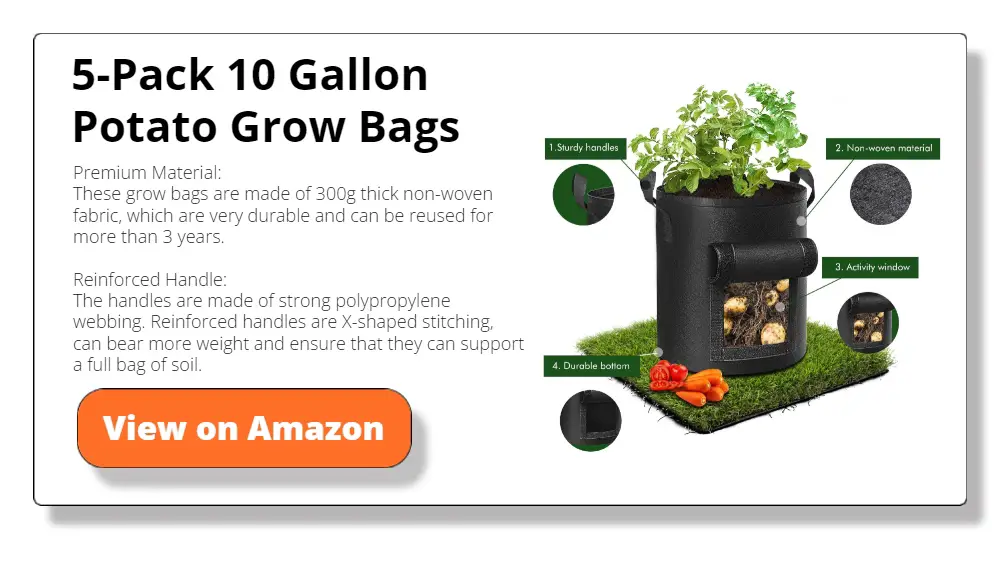
Extra Reminders
Here are some additional reminders to enhance your potato-growing journey with the enchantment of hay bale magic:
1. Choose the Right Variety: Select potato varieties that are well-suited for your region and growing conditions. Some varieties thrive better in specific climates and soil types, ensuring you grow your own potatoes successfully.
2. Pre-Sprout Your Seed Potatoes: To give your potatoes a head start, consider pre-sprouting them indoors before planting. This involves allowing the seed potatoes to develop small sprouts, which can lead to quicker and more robust growth when planted in the hay bales.
3. Proper Spacing: While planting in hay bales provides flexibility, ensure that you still provide adequate spacing between seed potatoes. Let each plant access nutrients, water, and sunlight more efficiently.
4. Monitor Moisture: Particularly in warm, sunny circumstances, hay bales’ permeable texture makes them easily dry. Maintaining a constant moisture level inside the bales is essential to guarantee best development of potatoes. To get a more accurate reading than surface moisture alone, routinely monitor the water content deep within the bales using a soil moisture meter. Water the bales early in the morning to lessen evaporation and provide deeper water penetration during hot weather. If you find the bales are drying out too rapidly, think about building a soaker hose system for steady, slow watering that maintains the bales moist without overloading.
5. Consider Companion Plants: One great way to maximize available space and improve the health of your garden is to intercrop your potato hay bale garden with complimentary crops. Along with optimizing space, planting beans next to potatoes improves the soil with nitrogen, therefore helping the potato plants. Strong smells of herbs like marigolds and basil help to naturally discourage pests, therefore lowering the need for chemical pesticides. Moreover, these friend plants can improve the variety of your garden by drawing helpful insects that support pollination and pest management.
6. Mulching: Mulching the top of your hay bale garden with straw or hay will have several advantages. By lowering evaporation—particularly important in hot weather when bales often dry up faster—this layer helps maintain soil moisture. Mulch also prevents weed growth, which can fight for nutrients and water among your potato plants. Furthermore, as the mulch breaks down, it brings organic stuff back into the bales, therefore enhancing the medium your potatoes grow on. Apply a liberal layer of mulch around the plants and replace it mid-season to keep its efficacy in moisture retention and weed control.
By incorporating these additional tips when you grow your own potatoes, you’ll maximize your chances of a successful harvest.
Optimizing Hay Bale Gardens for Different Climates
Hay bale gardening offers a versatile and dynamic approach to growing vegetables like potatoes. It allows gardeners to bypass traditional soil-based setups, but its success can vary with the climate. To optimize hay bale gardens for different climates, understanding how to adapt this method can lead to a more fruitful harvest.
Adapting to Dry Climates
In dry climates, maintaining moisture in hay bale gardens can be challenging. To prevent the bales from drying out, it’s crucial to water them regularly and deeply. Consider using a drip irrigation system for consistent moisture, and cover the bales with a light-colored mulch to reflect sunlight and reduce evaporation. Placing the bales close together can also help to minimize moisture loss.
Thriving in Humid Climates
Humid climates may expose hay bale gardens to excess moisture, which can lead to rot or fungal diseases. Elevating the bales on pallets ensures better air circulation around and under the bales, reducing the risk of moisture-related issues. It’s also beneficial to space the bales slightly apart to allow air to flow freely between them, which helps keep the foliage and bales dry.
Managing Cold Conditions
In colder climates, the insulating properties of hay bales can be a boon. To optimize a hay bale garden in such conditions, position the bales in a location that maximizes sunlight exposure during the day. Wrapping the bales in black plastic can help absorb and retain heat. Additionally, covering the garden with a frost cloth during extremely cold periods can protect the plants from freezing temperatures.
General Tips for All Climates
Regardless of climate, there are several practices that can enhance the performance of a hay bale garden. Regularly checking the internal temperature of the bales with a compost thermometer can provide valuable insights into the health of your garden.
Adjusting watering schedules based on temperature and weather patterns will help maintain the ideal moisture level within the bales. Furthermore, rotating the position of the bales each season can prevent the over-accumulation of pests and diseases in one area.
By implementing these climate-specific strategies, you can ensure that your hay bale garden remains productive and healthy, providing abundant yields in a variety of environmental conditions.
Hay Bale Potatoes Unearthed!
Uncover the enchanting world of potato cultivation as you embark on a journey that marries innovation with tradition. This guide is your ticket to a potato harvest that’s not only abundant but also delightfully simple to achieve.
With just seven straightforward steps, you’ll navigate the art of nurturing potatoes within the cozy embrace of hay bales. From choosing your materials to reveling in your bountiful harvest, this guide presents a comprehensive treasury of practical insights on how to grow your own potatoes within the enchanting haven of a hay bale garden.
The simple steps will empower you to transform your garden into a potato haven. Unearth the treasures of the earth with each step you take, and savor the satisfaction of growing your own spuds in a way that’s as rewarding as it is mouthwatering.
Now, are you excited to grow your own potatoes in a hay bale garden?
Grow your own root vegetables at home with these Root Vegetable Grow Bags! Also, check out our hand held seed planter guide to make the gardening process much easier.





